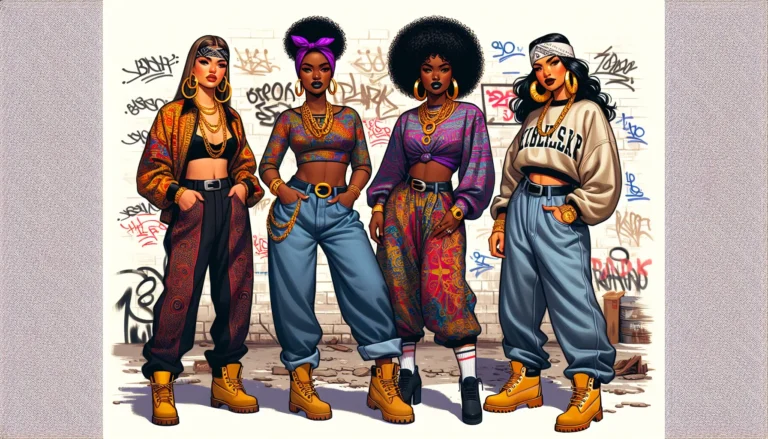Table of Contents
ToggleJapanese pop music, or J-Pop, is a vibrant tapestry woven with catchy melodies, energetic performances, and a dash of quirky charm. It’s not just music; it’s an experience that can make anyone’s heart race and feet tap, even if they can’t understand a single lyric. From the infectious beats of idol groups to the eclectic sounds of solo artists, J-Pop has something for everyone.
Imagine a world where bubblegum pop meets elaborate choreography and fashion statements that could make even the most seasoned trendsetter raise an eyebrow. J-Pop isn’t just a genre; it’s a cultural phenomenon that has captured the hearts of millions around the globe. So, whether you’re a seasoned fan or a curious newcomer, dive into the colorful universe of Japanese pop music and discover why it’s impossible to resist its infectious charm.
Overview of Japanese Pop Music
Japanese pop music, known as J-Pop, encompasses a wide array of styles and influences. Originating in the 1960s, this genre rose to prominence in the 1990s, becoming a significant part of Japan’s cultural landscape. Prominent artists and groups contribute to its evolution, blending traditional Japanese music elements with Western pop influences.
Catchy melodies and relatable lyrics characterize J-Pop songs, appealing to diverse audiences. Iconic artists include Namie Amuro, Arashi, and Hikaru Utada, each bringing a unique sound and style. Fans appreciate the fusion of musical genres, from rock to electronic, which continues to expand the boundaries of J-Pop.
Performances often include elaborate choreography, colorful outfits, and high-energy shows. Visual appeal plays an essential role, captivating audiences at concerts and in music videos. Emerging artists from various backgrounds fuel innovation within the genre, attracting new listeners.
Additionally, collaboration among international musicians enhances J-Pop’s global reach. Artists frequently experiment with varied musical elements while retaining their cultural identity. Streaming platforms help promote J-Pop worldwide, enabling fans to access various artists and discover new favorites.
Cultural storytelling also features prominently within J-Pop, with songs often addressing social issues, romance, and personal growth. This depth resonates with listeners, creating a strong emotional connection. J-Pop continues to evolve while remaining a vital part of Japan’s cultural identity and an exciting musical landscape for global fans.
History of Japanese Pop Music

Japanese pop music has deep roots, influenced by various musical styles over time. This genre draws from traditional sounds while embracing global trends, creating a unique and dynamic culture.
Early Influences
In the 1960s, Western rock and roll seeped into Japan, inspiring early artists. Musicians like Kyu Sakamoto blended American pop with traditional Japanese elements, establishing a new sound. Folk music and enka, a genre characterized by sentimental ballads, also played significant roles. Artists drew from these influences to craft their own identities, marking the beginning of a cultural fusion.
The Birth of J-Pop
The term J-Pop emerged in the 1990s, coinciding with Japan’s economic boom. This era saw artists like Namie Amuro and Hikaru Utada rise to fame, showcasing catchy melodies and engaging performances. Incorporating diverse influences, including hip-hop and electronic music, J-Pop quickly became a cultural touchstone. Record labels recognized its potential, investing in marketing strategies that reached a wider audience.
Evolution Through the Decades
Throughout the 2000s, J-Pop continued to evolve, integrating digital technology and social media into its framework. Emerging artists began exploring new sounds and themes. Collaborations with international musicians broadened its appeal. By the 2010s, streaming platforms made J-Pop accessible to global markets. This expansion facilitated rapid growth, allowing artists to connect with fans worldwide while keeping J-Pop’s essence intact.
Key Artists and Groups
Japanese pop music features a diverse array of influential artists and groups that have shaped its landscape across generations. Their contributions highlight the genre’s evolution and its cultural significance.
Pioneering Acts
Namie Amuro stands out as a transformative figure in J-Pop. Known for her blend of R&B, hip-hop, and pop, she brought a fresh sound to the industry in the 1990s. Alongside her, Kyu Sakamoto achieved international acclaim with “Sukiyaki,” creating a lasting impact on Japanese music’s global reach. Hikaru Utada emerged as a prominent artist, captivating audiences with her introspective lyrics and innovative melodies. Her debut album sold over 10 million copies, solidifying her status as a J-Pop icon. These pioneers paved the way for modern J-Pop, merging traditional sounds with contemporary influences and expanding the genre’s appeal.
Contemporary Stars
Arashi consistently captures the hearts of fans worldwide, blending pop, rock, and dance music. Their dynamic performances and chart-topping hits have solidified their status as cultural icons. Perfume represents the fusion of technology and music, delivering captivating electronic soundscapes combined with synchronized dance routines. Kenshi Yonezu, with his unique vocal style and genre-defying music, resonates with a younger audience, amassing millions of streams. Additionally, Lisa has gained acclaim for her powerful vocals featured in anime soundtracks, expanding her reach beyond traditional J-Pop. These contemporary stars continue to innovate, keeping J-Pop vibrant and relevant on the global stage.
Musical Characteristics
J-Pop exhibits distinct musical features that contribute to its unique sound and appeal. Characteristics like melodic structure and lyrical depth define the genre.
Melodic Structure
Catchy melodies dominate J-Pop, capturing attention with their infectious hooks. Songs often incorporate diverse influences from genres such as rock, electronic, and traditional Japanese music. Rhythmic variations enhance the listening experience, with tempo shifts adding excitement. Harmonies often involve layered vocals, creating rich soundscapes. Artists frequently experiment with instrumentation, blending both modern technology and traditional instruments. This approach ensures that melodies remain memorable and accessible, drawing in both new and seasoned listeners alike.
Lyrics and Themes
Relatable lyrics form the backbone of many J-Pop songs. Themes often revolve around love, personal growth, and social issues, reflecting listeners’ experiences and emotions. Storytelling plays a significant role, enriching the narrative quality of the music. Many artists incorporate elements of introspection, allowing listeners to connect deeply. Cultural references often appear within the lyrics, adding layers of meaning and inviting listeners to engage further. These thoughtful lyrics, combined with engaging melodies, foster a strong emotional bond with the audience, enhancing the overall impact of the music.
Cultural Impact
Japanese pop music significantly influences society and culture both locally and globally. It shapes trends, inspires fashion choices, and impacts youth identity. Often, music videos and live performances showcase elaborate visuals, creating a vibrant aesthetic that resonates with fans. Artists like Namie Amuro and Hikaru Utada often address social issues in their lyrics, fostering dialogue among listeners. The emotional narratives contribute to a collective understanding of contemporary life in Japan.
Global influence further illustrates J-Pop’s reach beyond Japan. Artists have collaborated with international musicians, introducing diverse sounds to wider audiences. Streaming platforms increase accessibility, enabling fans worldwide to discover J-Pop. Events like anime conventions celebrate J-Pop culture, attracting attendees eager to experience this musical trend. The genre’s fusion of styles, including traditional Japanese elements with Western pop, engages a broad audience. J-Pop has become a cultural ambassador, promoting understanding and appreciation for Japan’s rich heritage through music.
Japanese pop music continues to captivate audiences worldwide with its infectious energy and cultural richness. As it evolves, J-Pop remains a dynamic force that bridges traditional sounds with contemporary influences. The genre’s ability to connect with listeners through relatable themes and stunning visuals ensures its place in both Japan’s cultural identity and the global music scene. With each new artist and innovative sound, J-Pop invites fans to explore its ever-expanding universe, making it a thrilling journey for anyone willing to dive in. The future of J-Pop looks bright as it continues to inspire and resonate across borders.






